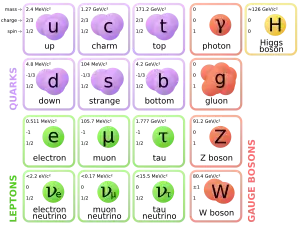It is just simply really weird to me that they can have a fractional charge.
The quarks have a charge that is 1/3 or 2/3 of the charge of the electron. The charge of the electron is not an integer, it is
−4.80320451(10)×10^−10 esu
By this I mean that it is a convention, to call it an integer of 1 as charge, and it is true that any charge measured macroscopically will be an integer multiple of this.
While other elementary particles, such as the electron, carry an integer charge.
The proton also carries an integer charge in this convention, and that is one of the reasons that we can have matter as we know it, with atoms and molecules etc.
So logically I would expect charge to be made up in discrete packets of charge
It is true macroscopically, all charges measured in absolute number are integer multiples of the electron charge
just like energy is made up of discrete packets of energy called photons.
This is a misunderstanding. Energy is an attribute of particles, the same way their location is space is an attribute. Photons have energy as do protons and electrons and all matter. $E=mc^2$ for particles and $E=h\nu$ for the photons where $\nu$ (nu) is the frequency.
And spin in particles comes in integers for particles as well.
Well, fermions have spin 1/2, 3/2 etc, bosons spin 0,1,2 etc so this is another misunderstanding.
Does this mean you can break up all other integer values assigned to other particles or subatomic particles?
The only reason we are adopting the quark terminology is that it has been found out that the protons and neutrons are not elementary particles.
Physicists found out that atoms were composed of electrons about a nucleus containing protons and neutrons by scattering experiments. These experiments showed that the central nuclei had a hard core and were composite, and it was understood that the nuclei were quantum mechanically bound protons and neutrons in different configurations.
The scattering experiments are ongoing, with higher and higher energies, and have showed us that protons and neutrons are composite and made up by three quarks. The painstaking gathering of many data resulted in the standard model of particle physics, which is a theoretical model that explains practically all observations up to now. This model has the quarks inherent in the description of the strong force . The other elementary particles in the table

are mathematically on par with quarks in being the building blocks of the model.
Or is this just a freak of nature and only happens in this one instance?
If one considers compositeness a freak of nature than this is unique to the strong force: it holds the quarks in the protons and neutrons , and the spill over of that strength holds the nuclei together. As the real world is based on nuclei in atoms it is not one ignorable instance!
The number three comes from the study of the scattering experiments, and the symmetries displayed by a plethora of resonances .The 1/3 and 2/3 come from a higher order algebra, a group structure on which the standard model is based that makes consistent all the data we have of strongly interacting resonances and composite particles like the pions and kaons etc.
